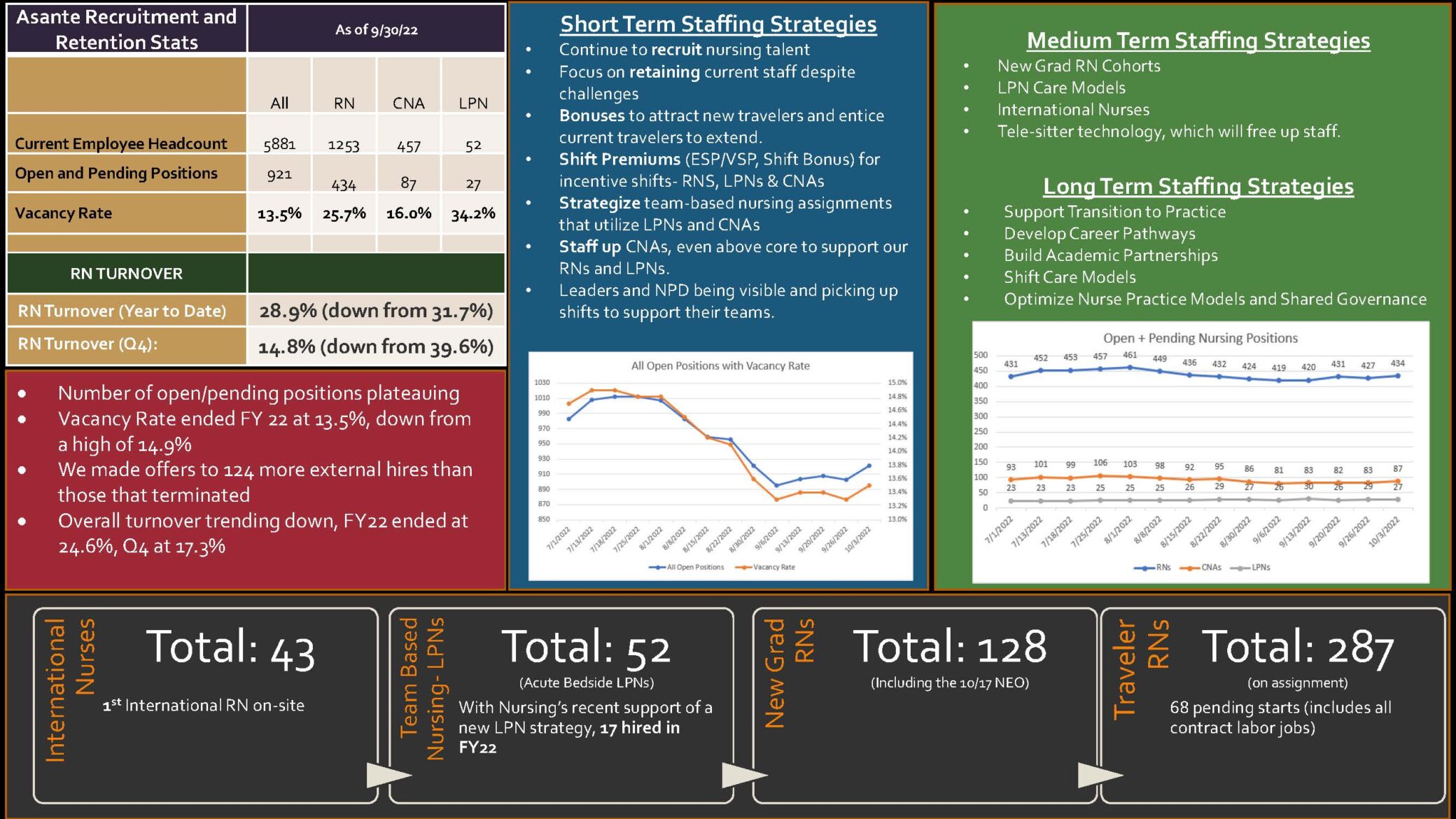Share:
How we’re working to reduce nursing staffing shortages

Recently, the Oregon Healthcare Workforce Committee conducted a study of Oregon’s nursing workforce to identify the challenges arising from staffing shortages.
The final report yielded some important findings:
- Oregon nurses report high levels of stress, frustration and burnout. Employers confirm these feelings and are deeply concerned about how to effectively address this situation.
- Widespread shortages are reported, however there remains uncertainty about the reasons for the shortages and there is little data to measure the extent and depth of shortages.
- Although nurse staffing in Oregon hospitals is higher than the national average, nurses attribute much of their stress and burnout to heavy workload.
- Enrollment in Oregon RN education programs has slowed; Oregon is heavily reliant on nurses educated in other states.
The primary recommendations this report offers do not provide immediate relief to the challenges Oregon now faces with the nursing workforce; multiple actions must be considered and taken at local and state levels to make long-term progress toward a sustainable, skilled and satisfied nursing workforce.
Many of the report’s draft recommendations include metrics Asante is actively engaged in:
- Retaining our nursing workforce.
- Increasing education capacity within the community through academic partnerships.
- Ensuring adequate clinical placements for students.
- Supporting transition-to-practice from school to the bedside.
- Supporting localized solutions for shortages such as career pathways.
- Simplifying staffing laws.
- The Oregon State Board of Nursing, Oregon Health Authority and Oregon Center of Nursing collaborating to advance strategies to track and predict nursing shortages. The data will aid decision-making on strategies to deploy.
- Focusing on clinical wellbeing.
Nurses work in nearly every facet of health care and are crucial in delivering high-quality, patient-centered care. Even before the COVID-19 pandemic, nursing shortages were occurring due to multiple factors. We are not immune to this in Southern Oregon and are trying to navigate the challenges in an extremely turbulent environment.
Effective workforce planning will ensure that we build an engaged workforce of the right size with the right skills and diversity, organized in the right way, delivering the services needed to achieve optimal patient outcomes.
To build a strong foundation, Asante needs to start at recruitment and follow employees through their experience and growth within the system, ultimately contributing to Asante’s nurse practice model. Tactics we deploy have medium- to long-term impact. Right now, our levers are centered around existing staff and contract labor. However, we have made progress as you can see in the diagram below.

Our workforce is the infrastructure that makes Asante a top employer. This is an incredibly challenging time to be in health care, and the work you do every day does not go unnoticed. Your ongoing input is essential to continue to help develop the awesome nurses and clinical staff that make this a great place to work.
Staci Sparks contributed to this report.
If you have a question, please contact the author or relevant department directly.



